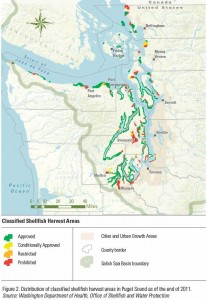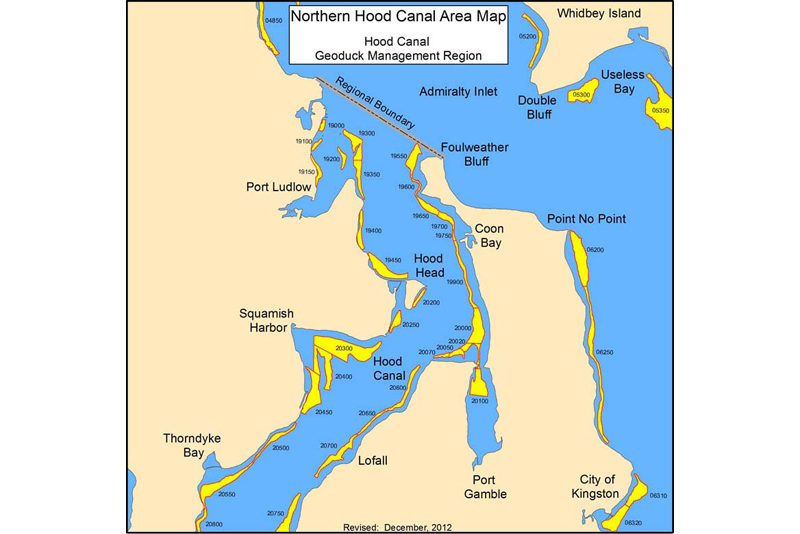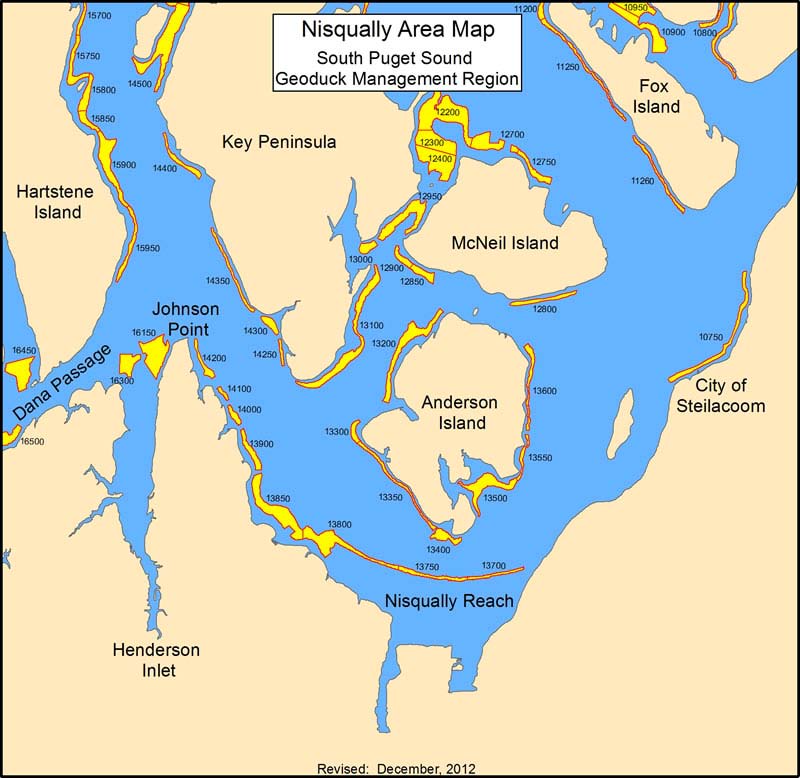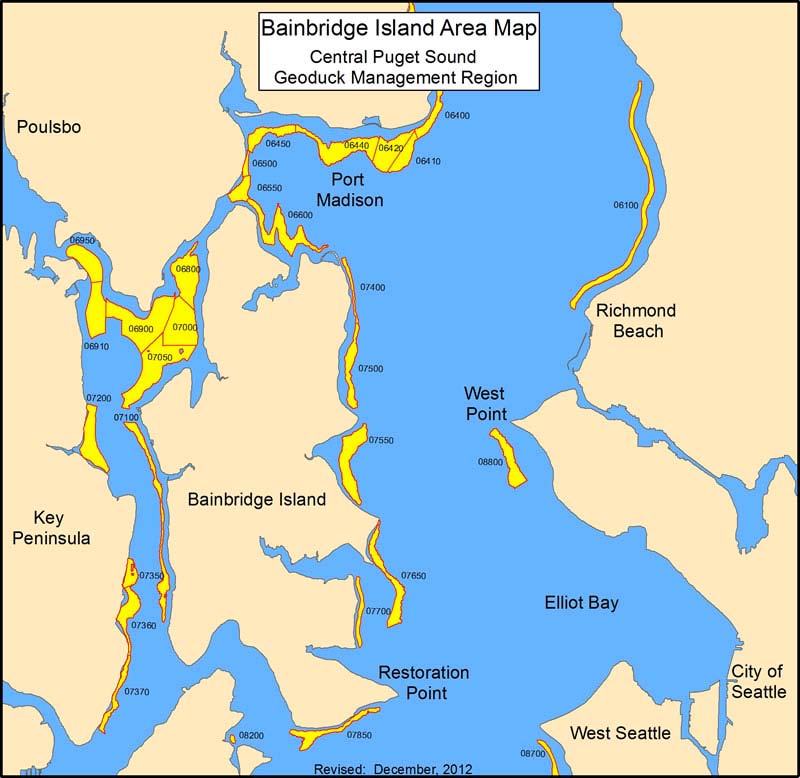Ed. Note: Rational discussion is a wonderful thing, and can even be accomplished online! Some weeks ago, Randy Shuman laid out very clearly the implications of the No Discharge Zone proposal from the Department of Ecology, and stated his educated opinion that it was a good idea for the health of Puget Sound. Peter Schrappen, in his monthly Northwest Yachting On Watch column, took a different stance. He followed up with a “call to action” email on Sunday. If you’re not on our newsletter list, you can read it here. It should be noted that while Peter works for the Northwest Marine Trade Association, he feels that it’s important for the industry to help lead the environmental charge rather than try to slow it.
Here is Randy’s response to Peter’s stance. While Ecology’s official comment period ended yesterday, it’s still a topic worth discussing. Please join in the discussion in the comments area below. – KH
Thank you for your reminder to boaters to respond to Ecology’s request for comments on the proposed No Discharge Zone (NDZ) for Puget Sound and invitation to send you our comments. I have already made my NDZ comments on the NW Yachting blog site (http:// www.nwyachting.com/2014/03/whats-with-the-no-discharge-zone-why-wont-they-leave-myhead-alone/). These are my responses to your Ecology comment.

Classified Shellfish Harvest Areas
First, you spend a significant portion of your comment letter describing the positive efforts by the NMTA on the phasing out of toxic bottom paint. While this shows the NMTA’s heart was in the right place and was indeed an admirable and helpful step on bottom paint, the suggestion that acting as a positive voice on one type of pollution coming from vessels should allow the continuation of another type pollutant discharge makes no logical, public health or scientific sense.
You state that the proposed NDZ will have a dramatic detrimental impact but offer no quantification of what that might be in operational or financial impacts. I assume that this lack of detail in your NDZ comments suggests that these numbers are either unknown or small.
There are numbers to show the resources put at risk both from land based and vessel discharges. These shellfish areas support the livelihoods of many water dependent businesses in Washington. For geoducks alone in 2010 more than 4,000,000 pounds were harvested for a value of greater than $36,000,000. Recreational shellfish harvesters purchased 300,000 licenses for over $3,000,000, these shellfish trips generated an estimated $5.4 million in economic impact. The shellfish industry is the second largest employer in Mason County.
You state that the NDZ will give Ecology the ability to board and conduct studies on vessels to assess pollution discharges through dye and tracer studies and that this is a threat to the NMTA mission to “Grow Boating.” I would assume that if your position that the discharges from these vessels is not significant and the MSDs are effective is correct that you would welcome these studies to prove your point. Does the NMTA consider the Coast Guard’s right to board vessels for safety and law enforcement a threat the your mission also?
Your suggested NMTA Comment to Ecology on the NDZ proposes that vessels should be exempted from the requirement to install a holding tank in waters where a discharge would not have an effect on shellfish growing areas and areas of water contact recreation. You propose that as an alternative to a blanket NDZ that only vessels that do transit areas where a discharge would effect shellfish beds should be required to have and use holding tanks. Let’s use some basic mapping and science to look at that proposal and see what areas of Puget Sound would allow discharge of MSD waste and not require a holding tank.
1. What areas are now classified as shellfish growing areas and recreational water contact? The maps below show certified shellfish growing areas and geoduck harvest areas. As you can see, the certified growing areas and geoduck areas include most of the western shorelines of Puget Sound, including Agate Pass, Port Susan, Liberty Bay, Vashon Island and virtually all of southern Puget Sound. You can see more geoduck maps at: http:// wdfw.wa.gov/fishing/commercial/geoduck/search.html
2. Next, let’s consider under NMTA’s proposal just how close vessels would need to stay distant from these shellfish growing areas so as to not allow the discharged bacteria and viruses to impact the growing areas that support these businesses. There have been many studies of the die off rates of human derived fecal coliform bacteria and viruses in marine waters (one summary:http://www.lummi-nsn.gov/nr/Water/WaterResourcesWeb/documents/ NonPointSource/FecalColiform%20literature%20review.pdf). These studies show that bacteria and virus survival rates are variable and depend on water temperature, sunlight and salinity among other factors. Die off rates in sediments where shellfish grow are often measured in days and weeks, but let’s use water values. The time of die-off down to 1% of the original concentration in marine waters ranges from hours to multiple days. Especially in the case of viruses and the most dangerous bacteria 1% may not be a sufficient reduction to protect public health, but let’s use it for a conservative example. The proper unit for fecal coliform concentrations are fecal coliforms per 100 ml. Taking a fast die off rate to 1% of 12 hours and a conservative average net tidal speed of 1/4 knot; the discharge of a vessel with no holding tank could travel 3 nautical miles in the time that it would take for the pathogens to reduce to 1%. This ignores the movement of surface water by wind driven currents, which would add to the transport. Given these numbers the logical result of the NMTA proposal would be to draw a boundary of 3 nautical miles around the shellfish growing areas and other water contact areas such as Elliott Bay, Shilshole Bay, Port Townsend Bay. This buffered area includes most of Puget Sound, including areas routinely transited by towing vessels. A vessel that never transited areas inside of these buffer zones would be allowed to operate a MSD without using a holding tank. This would include a very small portion of Puget Sound. Avoiding the installation of a holding tank and pump out just to transit these small areas would probably be a restriction that would not make sense to most operators.


